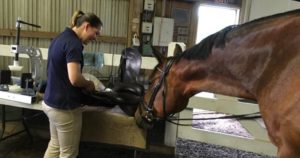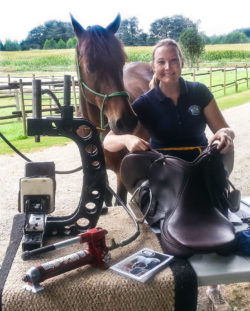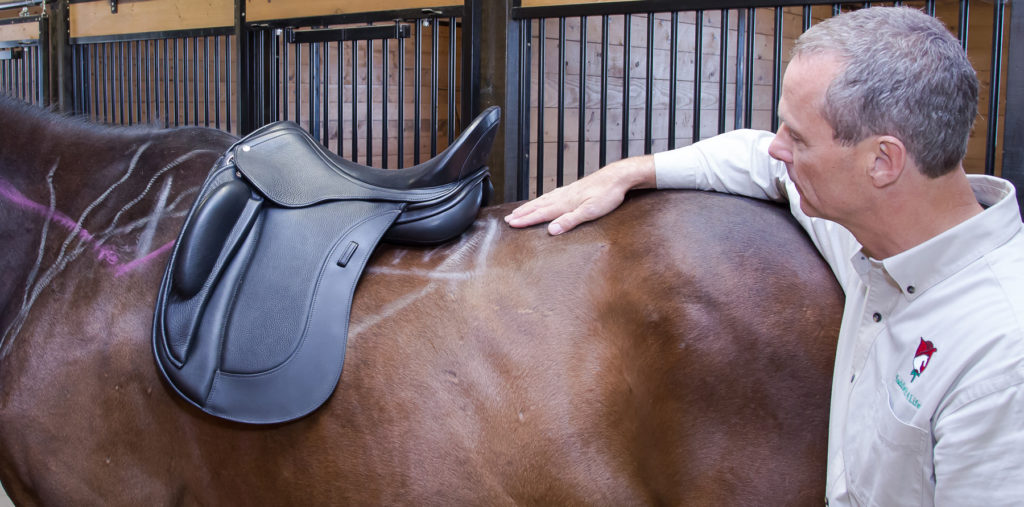Standardization of Saddle Fitting Criteria
I want to refer to a recent paper appearing in the Journal of Equine Veterinary Science, which was written by a group of non-scientists who were involved in a study to look at the repeatability of SMS (Society of Master Saddlers) qualified saddle fitters’ observations during static saddle fit.[1] What this means basically, is how much agreement was there between allegedly similarly trained and certified saddle fitters when determining how well and whether a saddle fit.

In the synopsis/abstract it states the purpose was to see the level of matching there was during assessing fit along the guidelines as taught by the SMS. There have been no recorded studies to date to determine any level of conformity between professionals working in this field. At the end of the day, there was substantial agreement of the 20 volunteers ‘tested’ only when regarding wither clearance (which is pretty basic given that we have all learned that 2-3 fingers is recommended at the top of the withers – but interestingly enough, no consideration was given to the necessary clearance at the side of the withers, which is something I have always advocated as important). Moderate agreement was given to the position of the billets as they related to the ‘girth groove’ and regarding panel contact. Only minimal consensus was given to the extremely important areas of tree width (nothing mentioned about angle!) and saddle length. The final recommendation given was that criteria for fit should be standardized, which is probably why the SMS has announced that it would be revamping its saddle fitter training in the next year. (I have offered my involvement in this crucial next step – but I’m still waiting for my invitation to participate.)

Unfortunately, the SMS is extremely traditionalist (after all, the British have been heralds in the saddle industry for many hundreds of years) and are very suspicious of newcomers (which I guess I could be classified as given my only 35+ years in this industry) and especially of innovative ideas. Sadly, not much has really changed in the British saddlery market over the decades.
The paper further confirms that legally anyone can fit, adjust, or sell saddles in the UK (and probably anywhere in the world for that matter) without holding any formal qualifications. It further states that England is the only country which offers an industry recognized qualification in saddle fitting – as provided by the Society of Master Saddlers. (This is somewhat disingenuous, as Germany has a somewhat more detailed apprenticeship than even the SMS). SMS qualification comes after a 4 day (!) course. Hardly sufficient to even get your feet wet in the field of saddle fitting, in my opinion – we at Saddlefit 4 Life don’t certify qualified Saddle Ergonomists until approximately 6-8 months of training (including extensive forays into human and equine anatomy and biomechanics) and practical experience (doing many saddle fit evaluations independently – correctly and completely!)
[1] Investigation looking at the Repeatability of 20 Society of Master Saddlers Qualified Saddle Fitters’ observations during static saddle fit. Russell Guire, Renate Weller, Mark Fisher, Jo Beavis. Journal of Equine Veterinary Science 2017.

©2017 Saddlefit 4 Life® All Rights Reserved
